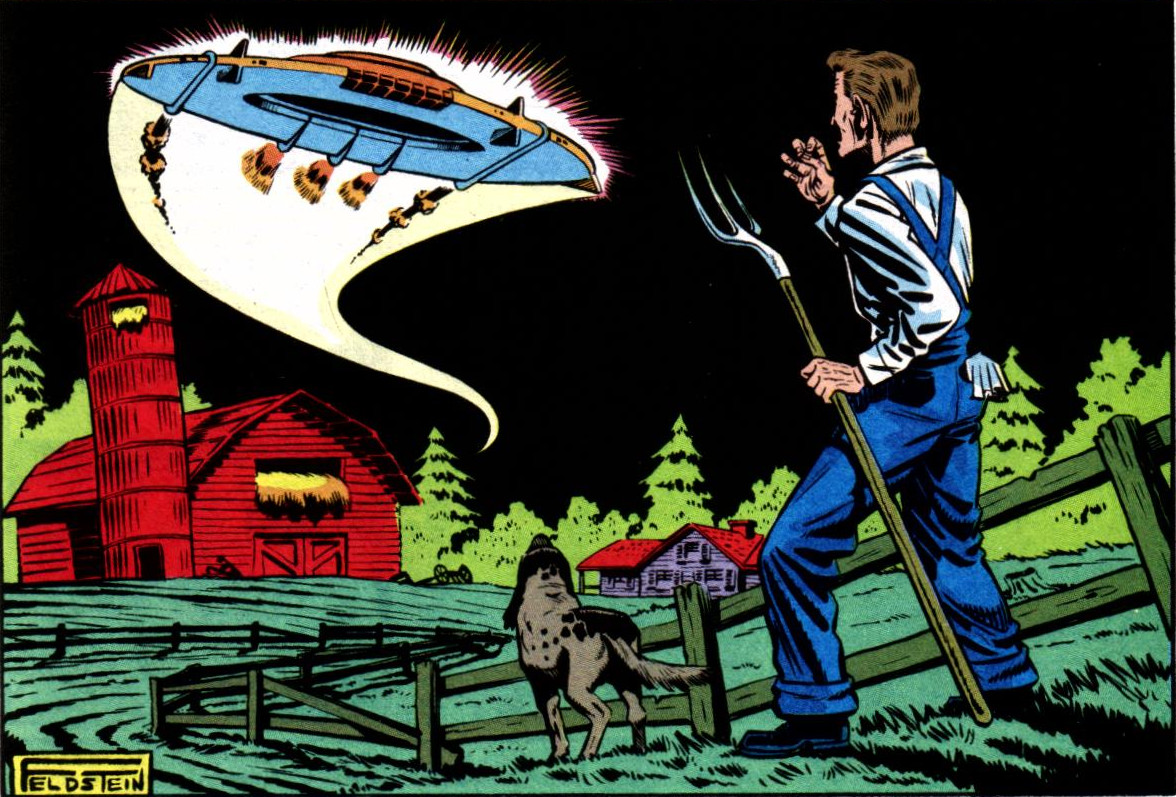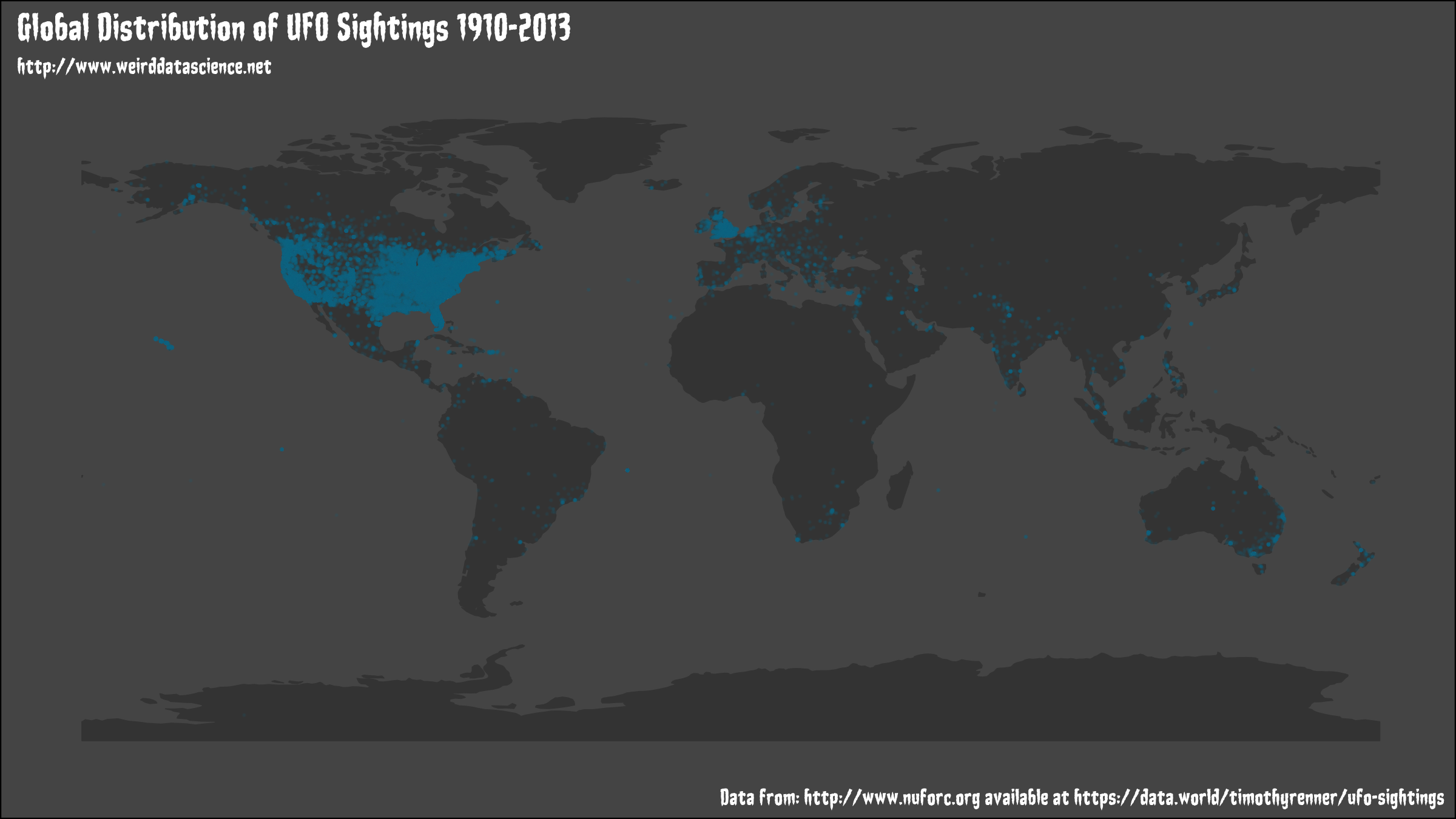
Where are you most likely to see a UFO? More importantly, where are they most likely to see you?
Thankfully, the National UFO Reporting Centre (NUFORC) have diligently compiled and curated a dataset of over a century of global UFO sightings. The data has been processed, cleaned, and uploaded by timothyrenner at data.world.
The full dataset is extremely detailed, with type of sighting, duration, latitude and longitude, and many other features included; there are many questions to ask of the data. As an initial offering for Weird Data Science, though, we will feed this dataset into R and get a feel for the global distribution of sightings in the dataset. The full code is at the bottom of this post, but here is the outcome:
What can we tell immediately? Firstly, there is a clear preference amongst UFO’s to descend on the United States, although Europe and in particular the United Kingdom receive their fair share of extraterrestrial visitations. The rest of the world is far from ignored, but our best hope of making contact would definitely seem to be in those two countries.
We will be analysing this dataset in much greater detail in the future. How have these sightings changed over time? Are there patterns to be discovered in when and where UFOs choose to reveal themselves? Are these events predictable? As always, the answers lie in the data.
You can keep up to date with our latest tinkerings with statistical reality on Twitter at @WeirdDataSci.


Be the first to comment
This site uses User Verification plugin to reduce spam. See how your comment data is processed.